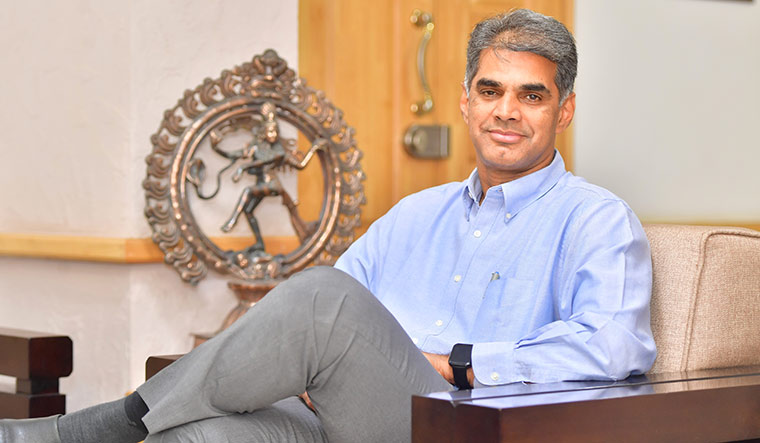Q\ How did the plan to expand rubber cultivation in the northeast come about?
A\ Our original proposal was to plant one lakh hectares in 10 years. When we submitted it to Union Minister [Piyush Goyal], he said, ‘Make it two lakh hectares in five years.’
The earlier plan involved taking loans from NABARD (National Bank for Agricultural and Rural Development). But funds were difficult to obtain that way. Banks were not keen on giving loans in areas where land documents were not in order. It is very difficult to find proper land documents in tribal areas. Also, the communities in the region are known for being credit-averse. So, for these reasons, the NABARD scheme did not take off.
But financial support for the project was still needed. There was also the fact that growers needed to be financially supported throughout the seven years the plant took to mature. So the minister advised us that we take help from tyre companies. They can chip in, he said, because ultimately what is produced will be utilised by them. They get a new source of rubber. Four tyre companies―MRF, Apollo, CEAT and JK Tyre―came together and agreed to contribute Rs1,000 crore (Rs50,000 per hectare) for this project.
Q\ Are there concerns about the quality of rubber being produced in the northeast?
A\ The tyre companies are very finicky about quality. Thanks to their involvement, quality of the output has been improving. A lot of interventions have happened. Ultimately, when the buyer intervenes and says, ‘I want this thing’, and you see the result in increased prices, it serves as a motivation for farmers.
Q\ What has been the progress so far?
A\ We have planted on 27,229 hectares in two years. The target was just 30,000 hectares―5,000 in the first year, and 25,000 in the second year. The target next year is 50,000 hectares.
The first challenge [when the project began] was to transport the planting material. Last year, we hired trains to transport the entire planting material from nurseries in Kerala. This year, we needed to transport only around 30 per cent of it, because private nurseries had come up there.
Q\ How did India become a rubber deficit country?
A\ Till 2001, we were producing enough rubber for the domestic industry, and rubber was a restricted item for import. If there was a shortage, it was imported through various channels. In 2001, the government opened up [and removed international trade barriers]. Anyone could import rubber. It did not immediately affect the domestic market, because international rubber prices also went up. But around 2005, our automobile industry underwent a huge revolution. The number of vehicles suddenly went up, prompting tyre companies to expand their capacity.
Now, tyre companies can build a plant and get it certified in a year. But it takes seven years for a farmer to nurture a rubber tree till it matures. By the time the trees matured, imports had increased.
Q\ What is the future of natural rubber? What would be the factors likely to influence it?
A\ Take Michelin, which is a company that has its own estates. They are planning to make all their products sustainable by 2050. Natural rubber is a sustainable product, whereas synthetic rubber is not. If more companies follow Michelin’s way, there would be greater demand for natural rubber, and in turn, greater need for plantations.
A second factor is the technologies to reclaim rubber―from tyres and other used products. How successful will those technologies be? That will also be a critical factor. I believe that there will be a healthy mix of these technologies and the demand for natural rubber.
A third factor we are exploring is carbon credits and sustainability certification. There have been promising developments of late. There are currently two [carbon credit-related] markets―the ‘compliance’ market and the ‘voluntary’ market. The compliance market is based on the UNFCC (UN Framework Convention on Climate Change), while the voluntary market is based on the Paris agreement. Rubber does not figure in the UNFCC carbon credit plan; but there is potential for [rubber tree-based] afforestation in the voluntary carbon market. So some groups have come forward to explore these opportunities.
The idea is that Rubber Board act as an interlocutor, negotiate with these groups, get these things certified and ensure that carbon credits are generated. Somebody will sell the credits, and the money goes to the farmer. If this link can be established, it can be a gamechanger for the natural rubber industry.


